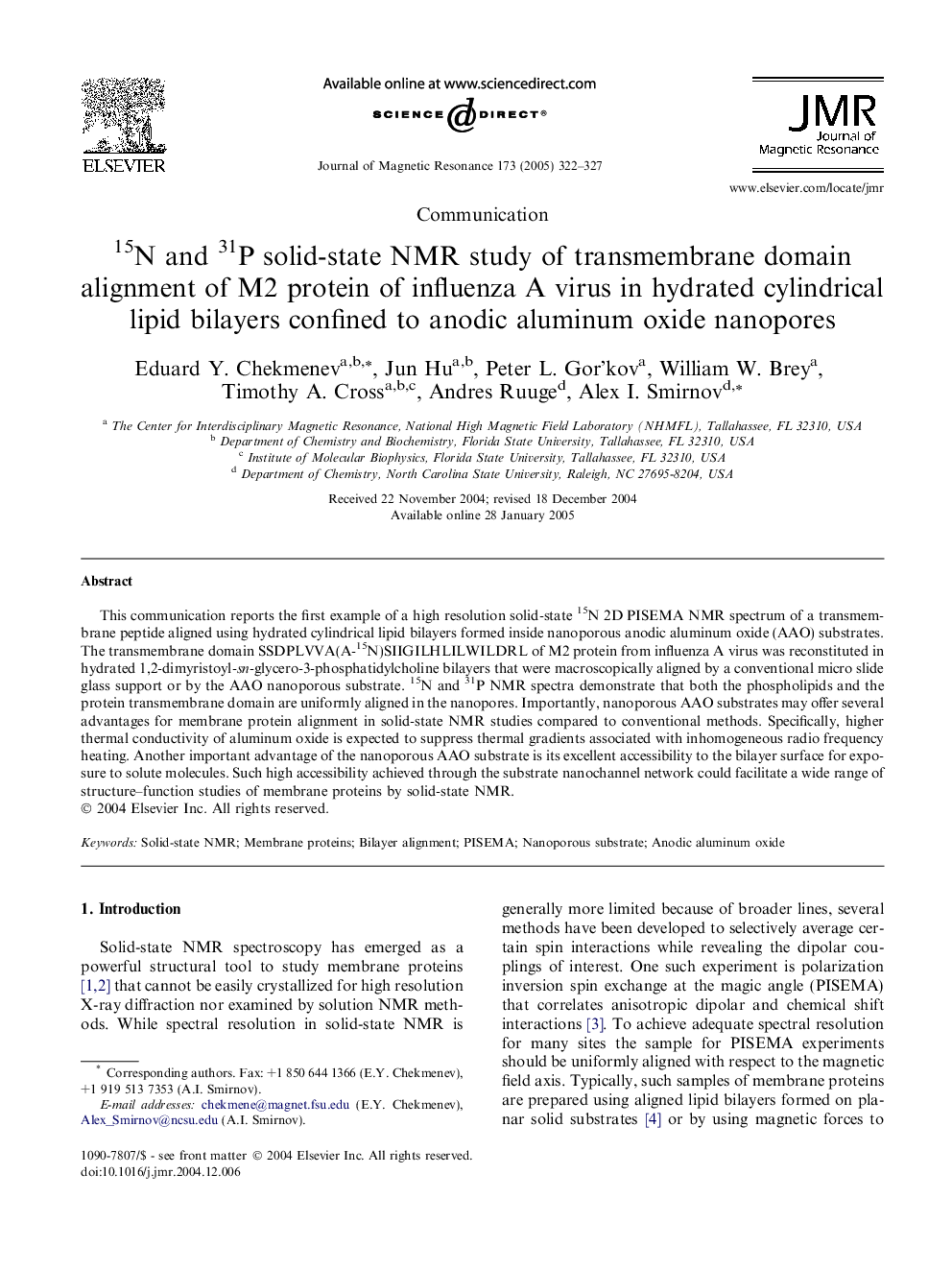| Article ID | Journal | Published Year | Pages | File Type |
|---|---|---|---|---|
| 9587491 | Journal of Magnetic Resonance | 2005 | 6 Pages |
Abstract
This communication reports the first example of a high resolution solid-state 15N 2D PISEMA NMR spectrum of a transmembrane peptide aligned using hydrated cylindrical lipid bilayers formed inside nanoporous anodic aluminum oxide (AAO) substrates. The transmembrane domain SSDPLVVA(A-15N)SIIGILHLILWILDRL of M2 protein from influenza A virus was reconstituted in hydrated 1,2-dimyristoyl-sn-glycero-3-phosphatidylcholine bilayers that were macroscopically aligned by a conventional micro slide glass support or by the AAO nanoporous substrate. 15N and 31P NMR spectra demonstrate that both the phospholipids and the protein transmembrane domain are uniformly aligned in the nanopores. Importantly, nanoporous AAO substrates may offer several advantages for membrane protein alignment in solid-state NMR studies compared to conventional methods. Specifically, higher thermal conductivity of aluminum oxide is expected to suppress thermal gradients associated with inhomogeneous radio frequency heating. Another important advantage of the nanoporous AAO substrate is its excellent accessibility to the bilayer surface for exposure to solute molecules. Such high accessibility achieved through the substrate nanochannel network could facilitate a wide range of structure-function studies of membrane proteins by solid-state NMR.
Related Topics
Physical Sciences and Engineering
Chemistry
Physical and Theoretical Chemistry
Authors
Eduard Y. Chekmenev, Jun Hu, Peter L. Gor'kov, William W. Brey, Timothy A. Cross, Andres Ruuge, Alex I. Smirnov,
